UV Light for Plants: The Complete Indoor Care Guide
If you’ve ever wondered whether a little extra light could transform your indoor plants, the answer is yes — UV light for plants can make a noticeable difference when used thoughtfully. While sunlight naturally delivers small amounts of ultraviolet rays, many indoor spaces don’t provide enough of this spectrum to unlock deeper color, stronger growth, or improved resilience. That’s where understanding UV light becomes a real advantage for plant lovers.
In this guide, you’ll explore how UV light truly affects indoor plants — what it helps with, what it can’t replace, and how to use it safely. You’ll learn the differences between UVA, UVB, and UVC, how much UV your plants actually need, which plants respond best, and the common mistakes to avoid. Whether you’re experimenting with variegated beauties, boosting pigmentation, or simply trying to mimic the sun a little better indoors, this guide will walk you through every step with clarity and confidence.
By the end, you’ll know exactly how to incorporate UV light into your plant care routine in a way that’s effective, safe, and tailored to your indoor jungle.
Table of Contents
Table of Contents
What Is UV Light? Understanding the Spectrum
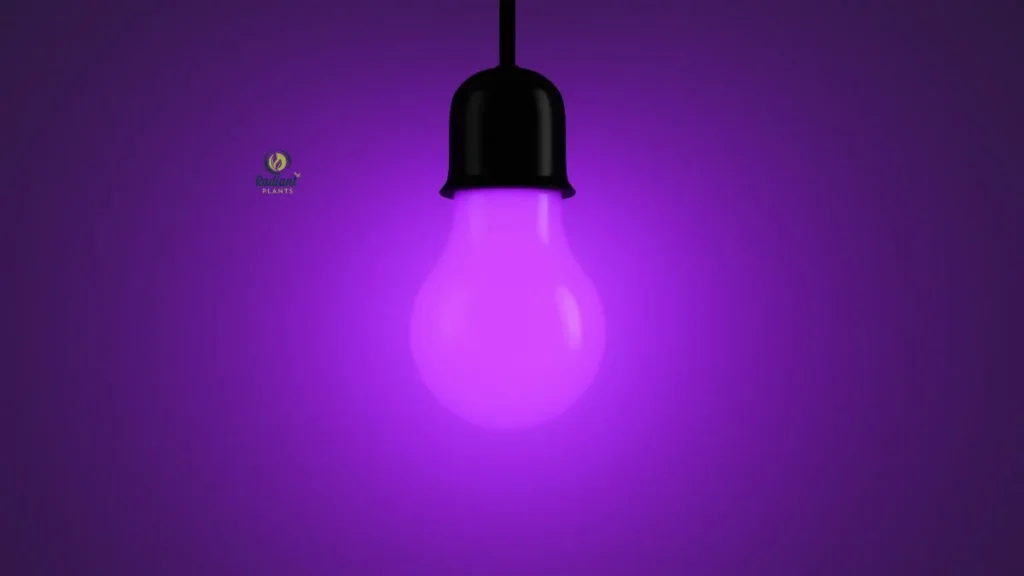
Ultraviolet light is a small but powerful part of the light spectrum, and understanding it is essential if you want to use UV light for plants effectively. UV light sits just beyond the violet end of visible light and is divided into three categories—UVA, UVB, and UVC—each with its own wavelength range and impact on plant growth. While plants naturally receive small amounts of these ultraviolet wavelengths from sunlight, indoor conditions often limit this exposure, which is why many growers turn to artificial UV sources.
UVA vs. UVB vs. UVC for Indoor Plants
UVA (315–400 nm) makes up about 95% of the UV that reaches Earth. It promotes photomorphogenesis, helping plants develop richer pigmentation, stronger stems, and compact growth. This is one reason plants like Crotons or variegated varieties show improved color under controlled UVA exposure.
UVB (280–315 nm) is more intense. In low, regulated amounts, it can boost plant resilience, essential oil production, and stress tolerance. Too much, however, can cause leaf burn or reduced growth. Many growers use UVB sparingly, especially with delicate ornamentals.
UVC (100–280 nm) is not naturally present in sunlight at ground level and is harmful to both plants and humans. It should never be used for growing or lighting indoor plants.
Is UV Light the Same as a Grow Light?
Not exactly. Standard grow lights provide the visible spectrum plants need for photosynthesis, while UV adds supplemental benefits. Plants cannot grow on UV light alone, but UVA and UVB can enhance color, stress tolerance, and overall vigor when paired with full-spectrum lighting.
If you’re working with bold foliage like the Croton, explore our guide, Croton Plant Care Tips for a Vibrant, Healthy Plant. And if you love colorful outdoor varieties, Flowering Peony Plants: 7 Stunning Varieties to Grow at Home offers more inspiration.
Does UV Light Help Plants Grow?
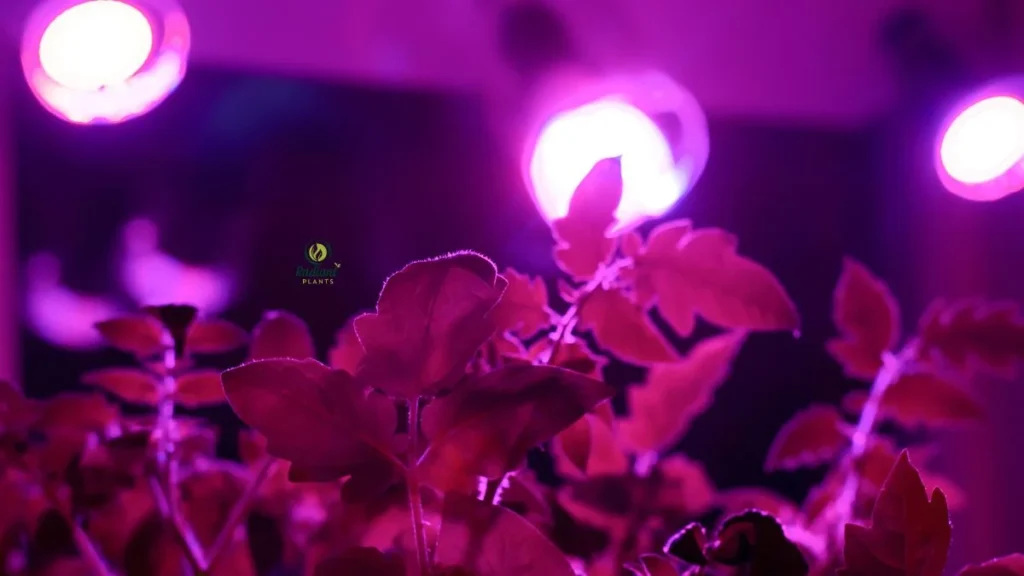
Many indoor growers wonder whether adding UV light for plants truly makes a difference—and the answer is yes, when used correctly. Studies from horticultural programs at the University of Vermont and the Royal Horticultural Society confirm that controlled UV exposure can enhance color, strength, and overall plant resilience. While plants don’t depend on UV the same way they rely on visible light, a balanced dose of ultraviolet wavelengths can elevate growth in ways normal indoor lighting can’t.
How UV Light Affects Photosynthesis and Pigment Production
Even though UV light for plants doesn’t directly power photosynthesis, it plays an important supporting role. UVA exposure increases chlorophyll production, encourages thicker leaves, and enhances natural pigments like anthocyanins—responsible for reds, pinks, and purples. UVB, used sparingly, can stimulate protective compounds and improve essential oil production in certain species.
This pigment boost explains why UV exposure often deepens coloration in variegated and ornamental plants. Moderate UVA also supports compact plant growth, helping reduce legginess—a common struggle for indoor gardeners. Is UV good or bad for plants? In the right amount, UV is beneficial; in excess, especially UVB, it can cause leaf burn or cell damage. Balance is everything.
Which Indoor Plants Benefit Most from UV Exposure?
Some species respond exceptionally well to UV light for plants, particularly those prized for strong coloration. Variegated varieties develop sharper contrasts, and succulents often reveal more intense “sun-stress” hues. Colorful ornamentals such as Crotons, Red Sister Ti plants, and pink or purple-toned foliage also thrive under mild UV exposure.
These plants naturally grow in bright habitats where UV exposure is part of their daily light environment—so offering UV indoors helps mimic the conditions they’re genetically adapted to.
For more inspiration on plants that shine under UV-supported lighting, explore Top 10 Stunning Variegated Plants to Brighten Your Space. And if bold tropical color is your style, Red Sister Plant: The Bold Beauty Your Home Deserves is a must-read.
Used thoughtfully, UV light for plants becomes a powerful tool for elevating indoor plant health, pigmentation, and growth.
How Much UV Light Do Indoor Plants Need?

Knowing the right amount of UV light for plants is essential to avoid under-exposure or accidental leaf burn. Indoor plants need far less UV than they would receive outdoors, but small, controlled doses can strengthen growth, deepen pigmentation, and improve resilience. Most experts agree that 2–6 hours of indirect UVA exposure per day is ideal for the average indoor ornamental plant, while UVB should be used very sparingly—often no more than 15–30 minutes per day, depending on intensity. These ranges help mimic natural conditions without overwhelming sensitive foliage.
Daily Exposure Time & Distance from Light Source
Because UV intensity increases dramatically the closer the plant is to the bulb, distance matters just as much as duration. For most full-spectrum grow lights with added UV, maintaining a distance of 12–24 inches works well for the majority of houseplants. High-output UVB bulbs, however, may need to be positioned 20–30 inches away to avoid overexposure.
A simple rule:
- Lower UV intensity = closer distance and longer exposure time
- Higher UV intensity = greater distance and shorter exposure time
If you’re working with high-light ornamentals—like Crotons—positioning matters even more. For reference, see Croton Plant Care Tips for a Vibrant, Healthy Plant for guidance on managing bright-light conditions.
Signs Your Plant Is Getting Too Much or Too Little UV
Too much UV exposure often shows up as bleached patches, crispy leaf tips, slowed growth, or sudden drooping. These symptoms usually appear within a few days and signal that you should increase distance or shorten exposure time.
Too little UV, on the other hand, results in washed-out color, weak new growth, stretched stems, or dull variegation. Plants that depend on bold pigmentation—such as Ti plants or variegated philodendrons—are especially responsive to corrected UV levels.
If your plant looks leggy despite strong visible light, modest UV adjustments can help create a more compact shape. For styling tips that pair beautifully with UV-supported growth, explore Easy Ways to Style Your Cane Plant in Any Room.
Used mindfully, UV light for plants becomes a precise tool—one that enhances growth without overwhelming sensitive foliage.
Best Types of UV Lights for Indoor Plants

Choosing the right UV setup matters just as much as knowing how to use it. With so many options available—from full-spectrum LEDs to UV-specific lamps—it can be hard to know which type of UV light for plants delivers the safest and most effective results. Fortunately, most indoor gardeners can achieve excellent outcomes using LED grow lights with integrated UVA diodes, which offer controlled, plant-safe ultraviolet output. These lights mimic the natural balance of sunlight, providing visible light for photosynthesis along with gentle UV to enhance color, strength, and resilience.
Full-Spectrum LED Grow Lights vs. UV-Specific Lamps
Full-spectrum LED grow lights are usually the best choice for indoor gardeners. They provide the entire range of visible wavelengths plus a small dose of UVA—ideal for compact growth, improved pigmentation, and healthier foliage. LEDs run cool, conserve energy, and significantly reduce the risk of leaf burn when compared to older lighting technologies.
UV-specific lamps (UVA or UVB tubes) deliver stronger ultraviolet output, making them better suited for advanced growers who need precise control. However, they must be used with caution: too much UVB can stress plants excessively, even though moderate UVB exposure may help plants develop stronger cell walls and improve resistance to pests such as aphids. For more on pest-related stress, see How to Get Rid of Aphids: 5 Mistakes to Avoid.
Are UVB Bulbs Safe for Indoor Plant Use?
UVB bulbs can be safe—if used sparingly and correctly. They should never serve as a primary grow light. Instead, they work as supplemental lighting for certain species that naturally thrive in high-UV environments. A few minutes of UVB per day can benefit tough ornamentals, but tropical plants like Philodendrons are more sensitive. For guidance on UV-friendly care routines, visit The Ultimate Guide to Philodendron Red Congo Care.
So, what kind of UV light is best for plants? In most homes, full-spectrum LED grow lights with gentle UVA offer the safest, most balanced choice. They enhance leaf color, support compact growth, and keep your indoor garden thriving—without the risks associated with strong UVB output.
When used mindfully, UV light for plants becomes a powerful, plant-safe tool that elevates indoor gardening results.
Safety Tips: Is UV Light Harmful to Plants or Humans?

Using UV light for plants can dramatically improve growth, color, and pest resistance—but only when used safely. UV radiation is powerful, and too much exposure can harm both plants and people. The good news? With the right setup, you can enjoy the benefits of UV lighting while avoiding risks.
Most plant-friendly UV systems fall in the UVA (315–400 nm) and UVB (280–315 nm) ranges. These wavelengths are generally safe for indoor gardening when used in controlled doses. UVC (100–280 nm), however, is dangerous for both humans and plants. It’s often used for sterilization—not gardening—and should never be part of a home grow setup.
Plants can experience UV burn when exposed to excessive UVB radiation. Common symptoms include bleached patches, crispy leaf edges, or slowed growth. If you’re working with delicate species like the Pink Panther plant, which is sensitive to lighting changes, consider reducing UV exposure or increasing the distance from the fixture. Why the Pink Panther Plant Is Your Next Must-Have
UV Risks for Indoor Gardeners (Eyes, Skin, Pets)
UV exposure can irritate your skin and eyes, especially if you work close to grow lights. Even reflected UV can cause strain. Pets are also vulnerable—cats and dogs may develop eye discomfort if they stare at bright fixtures. UVB bulbs emit stronger rays, so always check safety ratings and avoid direct human exposure when the lights are on.
How to Use UV Light Safely in Your Home
To use UV systems responsibly:
- Choose lighting marketed specifically for indoor plant use, with clear UVA/UVB labeling.
- Keep UV fixtures 12–24 inches above plant canopies.
- Run UVB lights in short daily cycles (30–60 minutes) rather than all day.
- Use protective measures: glasses rated for UV, timers, and shields.
- Never run UVC lamps around humans, plants, or pets.
If your plants show early signs of stress, treat them quickly. Our guide on fragrant yet sensitive plants, like the Night-Blooming Jasmine, offers insight into managing light-related issues. Night Blooming Jasmine Care for Stunning Growth.
With mindful use, UV light for plants becomes a safe, effective way to boost growth without exposing your home to unnecessary risks.
Common UV Light Mistakes to Avoid
Using UV light for plants is an effective way to improve growth, color, and resilience, but it’s also easy to make mistakes that lead to stress or reduced performance. Understanding these common errors helps you keep your indoor garden healthy and thriving.
Overexposure & Leaf Burn
One of the most frequent UV mistakes plant owners make is giving their plants too much UVB. While short UVB cycles can boost compact growth and deepen pigmentation, long exposure quickly leads to leaf scorch, bleached patches, and crispy margins. Tender species—especially variegated plants—show damage even faster because their lighter leaf tissue contains less chlorophyll. If a plant is already stressed from issues like dehydration or root problems, UV burn becomes even more likely. Root Rot Treatment: 7 Proven Ways to Stop the Spread.
To prevent overexposure, follow the manufacturer’s recommended UV schedule and start with 15–30 minutes per day, gradually increasing only if your plant shows no stress signs.
Choosing the Wrong Type of UV Light
Not all UV bulbs are suitable for plant care. Reptile bulbs and sterilization lamps (especially UVC) can severely damage foliage. Always choose grow lights specifically designed for indoor plant care, with a clear UVA/UVB breakdown. Full-spectrum LEDs with UV diodes are the safest and most balanced option for home use, delivering controlled wavelengths without harming plants.
Ignoring Light Distance or Duration
Another common lighting error is placing the UV source too close or running it too long. UV intensity increases sharply the closer the bulb is to the plant canopy, which can trigger unnecessary plant stress. Keep most UV fixtures 12–24 inches away and rely on automated timers for consistency.
This is especially important for variegated varieties, which are more sensitive to environmental fluctuations. For inspiration and plant-safe lighting tips, explore our guide on stunning foliage varieties.
Top 10 Stunning Variegated Plants to Brighten Your Space
With mindful adjustments, UV light for plants becomes a powerful tool—not a source of stress—for your indoor garden.
Can You Propagate Plants Under UV Light?
Many gardeners wonder whether UV light for plants can speed up propagation or strengthen newly developing roots. While UV plays an important role in mature plant development, its effects on cuttings are different—and timing matters.
Does UV Help or Stress Cuttings?
Fresh cuttings are extremely delicate. They lack a developed root system and rely entirely on stored energy to survive their early stages. Because of this, UV exposure—especially UVB—can stress cuttings rather than help them. Scientific studies show that young tissues exposed to strong UV experience slower cell division and reduced moisture retention, which can delay rooting.
A safer approach is to provide bright, indirect full-spectrum light without direct UV during the first 10–14 days. Once roots appear, you can gradually introduce low-intensity UVA to encourage stronger pigmentation and compact growth. This transition is particularly helpful for colorful plants like Dragon Tail and Arabian Jasmine, which benefit from well-structured light environments.
(Internal links: Dragon Tail Plant Care: The Ultimate Guide, Arabian Jasmine Plant Care: Tips for Growing This Fragrant Beauty)
Best Light Setup for Propagation Trays
For best results, use a full-spectrum LED with UV diodes turned off or dimmed until cuttings have rooted. Position the light 8–12 inches above the propagation tray and maintain a consistent cycle of 12–14 hours of light per day. High-humidity domes pair well with this setup because they protect tender tissues from UV dryness while supporting strong root initiation.
Once cuttings mature and form strong root systems, you can gradually reintroduce moderate UV exposure—just as you would with any established plant. With the right schedule and gentle lighting, UV light for plants becomes a beneficial tool without compromising propagation success.
FAQs About UV Light for Plants
Can you use UV lights to grow plants?
Yes, you can use UV lights to support plant growth, but they shouldn’t be the only light source. UV works best as a supplement to full-spectrum lighting. UVA helps with pigmentation and compact growth, while UVB can boost stress resistance in small doses. For vibrant, colorful plants, explore our guide on Top 10 Indoor Variegated Plants to Brighten Up Your Space.
Can UV light replace sunlight?
No—UV light alone cannot replace sunlight. Plants need a mix of visible light wavelengths (blue, red, green) for photosynthesis. UV only makes up a small portion of what plants use. Full-spectrum grow lights are a better substitute when natural light is limited. UV works as an enhancer, not a replacement.
How long should you leave UV light on plants?
Most indoor plants only need 1–2 hours of supplemental UVA per day, depending on intensity. Too much exposure can stress leaves, especially in tender species. Start with short sessions and increase gradually. Keep UVB even lower (15–30 minutes) to avoid scorch.
Can you give plants too much UV light?
Yes—overexposure can cause leaf burn, bleaching, slowed growth, and dehydration. This is especially common with UVB bulbs placed too close to the canopy. Plants already stressed by pests or root issues are more vulnerable; see Root Rot Treatment: 7 Proven Ways to Stop the Spread for more plant health tips.
Is LED or UV better for plants?
LED grow lights are better for overall plant growth because they provide the full spectrum needed for photosynthesis. UV is beneficial only in small supplemental doses. Many modern LEDs include optional UV diodes, offering the best of both worlds.
Can I use LED lights as a UV light?
Regular household LEDs don’t emit useful UV wavelengths. To mimic UV benefits, you need a grow light with UVA/UVB diodes. These are designed specifically for plant photomorphogenesis and safe indoor gardening.
What color UV light is best for plants?
UVA in the 365–400 nm range is ideal for indoor plants. It boosts pigmentation, leaf structure, and natural coloration. UVB (280–315 nm) can be helpful in tiny amounts but is much stronger, so it should be used carefully.
Can I use my phone light as a UV light?
No—phone flashlights do not produce UV wavelengths. They only emit visible white light, which doesn’t trigger UV-related plant responses such as increased pigmentation or stress signaling.
Can any LED light be used as a grow light for plants?
Not all LED lights work for plant growth. Plants need specific PAR wavelengths (blue and red) found in full-spectrum grow LEDs. Standard bulbs may keep a plant alive, but won’t support healthy development or strong color. Plants like Crotons and Red Sister especially need proper lighting for vibrant foliage.
Will plants grow without UV light?
Yes—plants can grow perfectly well without UV. Most photosynthesis happens in the visible light range. However, a little UVA can enhance leaf color, density, and stress tolerance. Variegated plants often benefit from low UV supplementation.
What is the 3-hour gardening rule?
The 3-hour rule suggests that many low-light plants can stay healthy if they receive at least 3 hours of bright indirect light daily. While not UV-specific, it’s a useful guideline for indoor gardeners managing low-light spaces.
Which is better for plants: 365 or 395 UV light?
For most indoor setups, 365 nm UVA is more effective. It sits closer to natural solar UVA and helps enhance color and compact growth. The 395 nm range still works but is considered less biologically active.
Understanding how to use UV light for plants can completely elevate your indoor gardening experience. When used intentionally and in the right amounts, UVA and low-dose UVB help strengthen foliage, enhance natural color, and support more compact, vibrant growth. The key is balance—providing short, controlled exposure, choosing the right fixtures, and watching your plants closely for signs of too much or too little UV. With a little practice, UV supplementation becomes a powerful tool that mimics the natural sunlight your houseplants crave.
Now that you know how UV light works, why it matters, and how to use it safely, you’re ready to fine-tune your lighting setup and help your plants thrive year-round. Whether you’re growing colorful ornamentals, lush tropicals, or unique variegated varieties, the right lighting makes all the difference.
Want to explore plants that truly shine under proper lighting?
Read our guide on Top 10 Indoor Variegated Plants to Brighten Up Your Space or discover how to style your home with lush foliage in Easy Ways to Style Your Cane Plant in Any Room.
Your indoor jungle is about to look more radiant than ever. 🌿✨




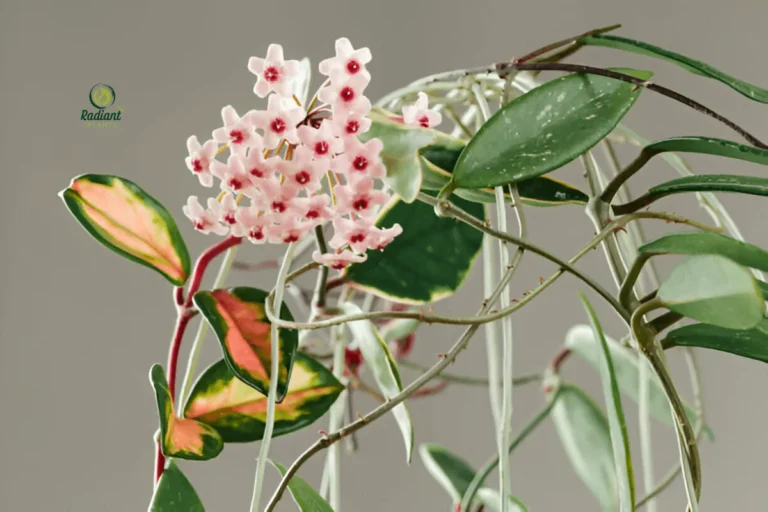

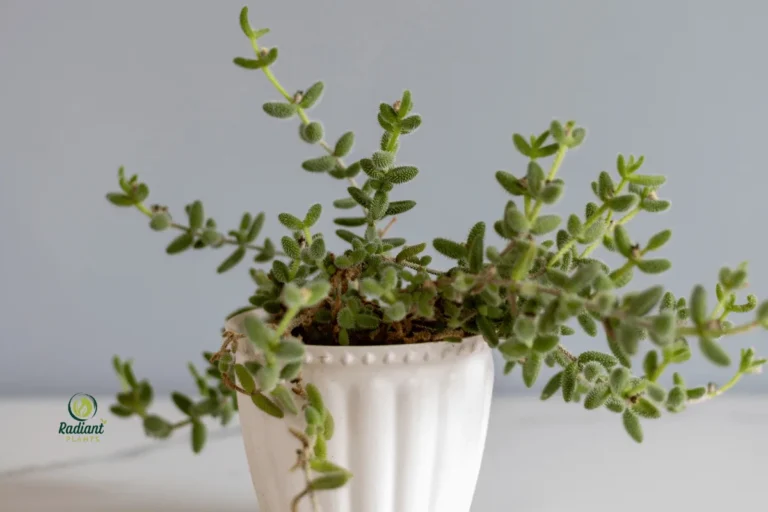
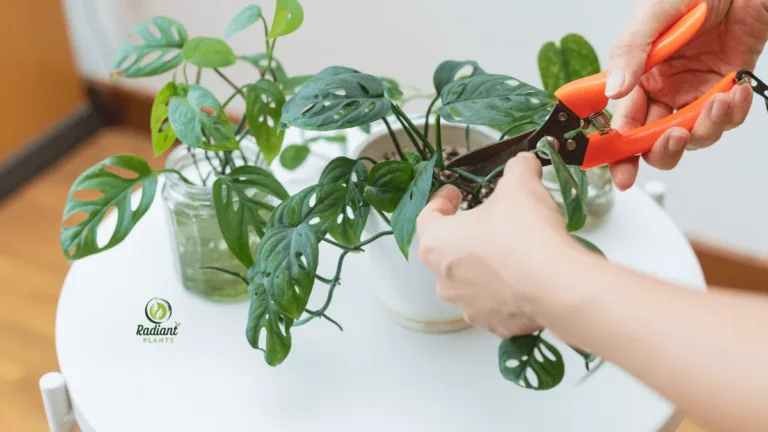
Greetings everyone! If you’re looking to figure out your color season, especially if you feel you might be a Deep Summer type, there are countless great resources online. Deep Summer color palettes typically feature crisp, muted tones that work with olive or yellow undertone skin amazingly. Free color analysis evaluations and AI tools can actually help you determine your season without investing a dime, and they often include ideas for clothes and hair colors for 2026 trends too.
I found that using apps like the color analysis pro app or visiting websites with detailed seasonal color analysis really strengthened my understanding of what colors match me best. If you want something quick and interactive, try the quiz at color analysis ai free —it’s a excellent starting point to discover what season you are and what clothes or hair colors might enhance your natural complexion. Knowing your season can make deciding on makeup, hair colors, and clothing shades so much simpler and more fun!